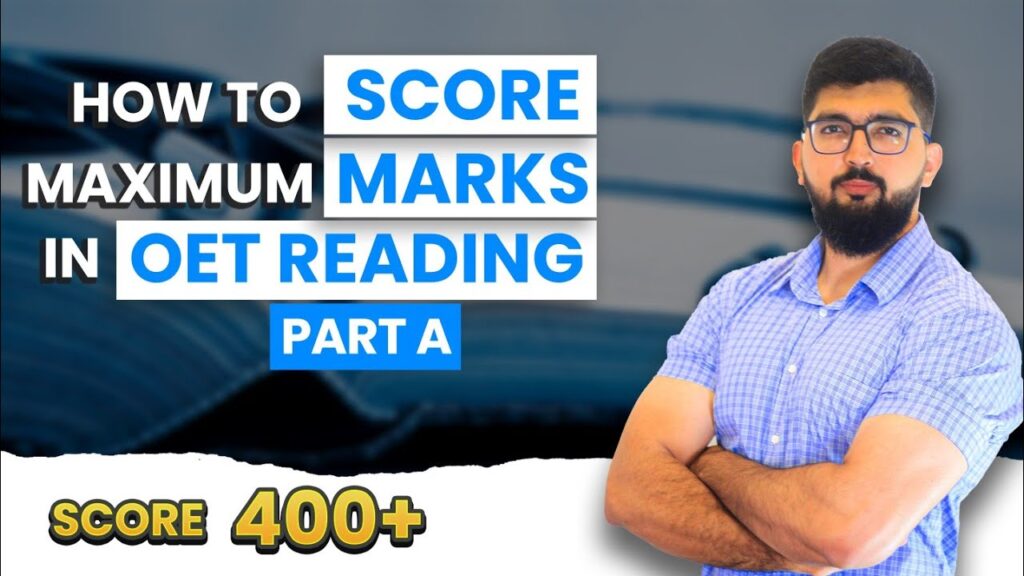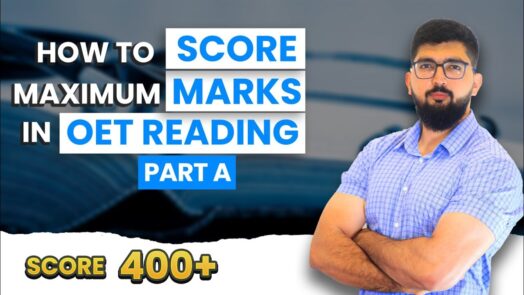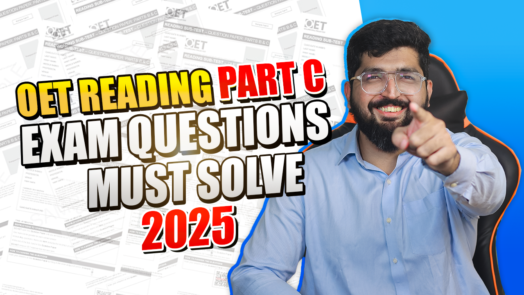
Learn how to clear OET Reading Subtest in first attempt with expert tips and strategies. Achieve your OET goals quickly and efficiently with our comprehensive guide.
How to Clear OET Reading Subtest in First Attempt: Expert Tips & Strategies
Learn how to clear OET Reading Subtest in first attempt with expert tips and strategies. Achieve your OET goals quickly and efficiently with our comprehensive guide.
The OET Reading subtest is often considered one of the most challenging components of the OET, following the Writing subtest. Many students, even those with a strong command of English, struggle with this section. However, with the strategies outlined in this guide, you can significantly improve your performance and potentially achieve a score of over 400. Let’s dive into how you can master the OET Reading subtest.
Understanding the OET Reading Subtest Structure
Firstly, it’s crucial to comprehend the structure and approach required for the Reading subtest. This section is divided into three parts:
- Part A: 20 Marks
- Part B: 6 Marks
- Part C: 16 Marks
Part A: Efficient Strategies
How to Clear OET Reading Subtest in First Attempt: Part A Tips
Part A presents you with four texts (Labelled A, B, C, and D) and 20 questions. The initial 7 questions require you to identify the specific text from which the question is derived, while the remaining 13 are fill-in-the-blank questions, where you must complete sentences with a word or short phrase.
Time Management
So, what is the best time-effective strategy to solve Reading Part A? You have 15 minutes = 900 seconds (45 seconds for each question). First, spend 30 seconds skimming and scanning each text to get a general idea of the content. Highlight key points to improve your locating power when answering questions. This leaves you with 760 seconds to attempt the 20 questions (35-38 seconds per question). This strategy ensures you have a better understanding of the texts and can find answers more easily.
Pro-Tips
- Start with Question 8: Always begin with questions 8 to 20 as they require detailed reading.
- Highlight Key Information: Mark abbreviations, signs, numbers, and percentages to quickly locate answers.
- Synonyms Awareness: Be mindful of synonyms in the questions that may appear in the texts.
- Move On If Stuck: Spend no more than 35 seconds on a single question. If stuck, move on and return later.
- Avoid Spelling Mistakes: Ensure your answers are spelled correctly to avoid losing marks.
Part B: Strategic Approach
How to Clear OET Reading Subtest in First Attempt: Part B Tips
OET Reading Parts B and C are attempted together in 45 minutes. Effective time management is crucial.
Read Questions and Options First
Start by reading the question and options, then read the text. This helps you quickly locate the relevant information without confusion.
Be Efficient
Spend the necessary time on Part B, but ensure you leave enough time for Part C.
Part C: Tackling the Toughest Section
How to Clear OET Reading Subtest in First Attempt: Part C Tips
Reading Part C is considered one of the toughest subtests of the OET exam, and here, the majority of students face difficulty while interpreting the text.
Effective Strategies for OET Reading Part C
Whenever you start to attempt OET Reading Part C, make sure to write the paragraph number on the right or left side of the text; it is very important. The best strategy is to read the question first, go to the paragraph, and then come to the options. Only spend two minutes per question on a single question. Please note, questions are made on an OET difficulty index; if you spend more time on a particular question, ultimately you won’t be able to attempt the complete paper, and maybe the next questions are easy, and you have no time to attend to them.
Types of Questions in OET Reading Part C
Here are the types of questions you can expect in OET Reading Part C, along with examples:
- Factual Information: You may be asked to identify specific facts or details from the text. These questions often start with phrases like “According to the passage,” or “In the text, it is mentioned that…”
- Example: “According to the passage, what percentage of patients experienced improved symptoms after the new treatment?”
- Main Idea: You might need to determine the main idea or the primary purpose of the text. Questions like “What is the main focus of the passage?” fall into this category.
- Example: “What is the main focus of the passage discussing the impact of diet on chronic diseases?”
- Inference: These questions ask you to make inferences or draw conclusions based on the information in the text. For example, “What can be inferred from the passage about the patient’s condition?”
- Example: “What can be inferred from the passage about the likely prognosis for patients who receive early treatment?”
- Vocabulary: Some questions may test your understanding of healthcare-related vocabulary. You could be asked to choose the correct definition of a medical term as it is used in the context of the passage.
- Example: “In the context of the passage, what does the term ‘palliative’ most closely mean?”
- Reference: Questions may require you to identify the referent of a pronoun or clarify the meaning of a word or phrase based on its context in the passage.
- Example: “To whom does ‘they’ refer in the context of the third paragraph?”
- Purpose or Goal: You may need to identify the purpose or goal of a specific action or procedure mentioned in the text.
- Example: “What is the primary goal of the new screening protocol introduced in the passage?”
- Attitude or Tone: Questions might ask you to determine the author’s attitude or tone in a particular part of the passage.
- Example: “What is the author’s tone when discussing the limitations of the current research?”
- Comparison: These questions involve comparing two pieces of information or concepts from the passage.
- Example: “How does the effectiveness of Treatment A compare to Treatment B in managing symptoms of anxiety?”
- Cause and Effect: You might be asked to identify a cause-and-effect relationship described in the text.
- Example: “What effect does prolonged exposure to stress have on heart health, according to the passage?”
- Institutional Policies or Guidelines: In some cases, you’ll need to understand and apply institutional policies or guidelines discussed in the passage.
- Example: “According to the hospital’s new guidelines, under what circumstances should patient consent be obtained?”
Additional Resources
For more detailed strategies and tips, you can refer to the official Lets Crack OET by DR Nasir and the his tutorials
Internal Links
To further enhance your OET preparation, check out our other guides on OET Writing Tips
 drnasiracademy
drnasiracademy 


